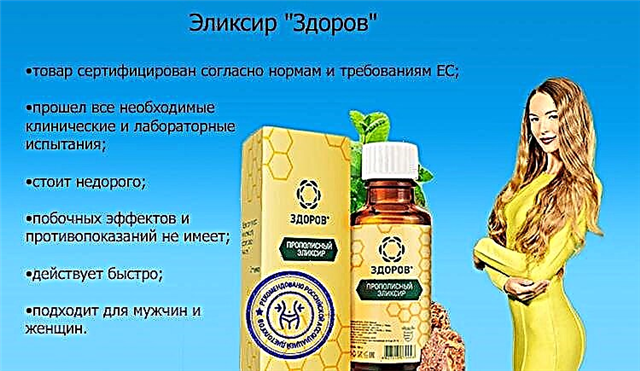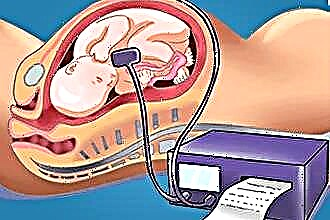Sinusitis is usually called an acute inflammatory process, which is localized in the maxillary nasal sinuses (sinuses). If the right side is affected, the doctor diagnoses "right-sided sinusitis." When the pathogenic microflora develops in the left paranasal sinus, left-sided sinusitis appears. In most clinical cases, this disease is accompanied by headaches (aggravated by tilting the head), complete or partial nasal congestion and an increase in temperature to febrile values (39 degrees and above).
Key causes of the onset of the disease
 Right-sided sinusitis, like left-sided maxillary sinusitis, occurs due to many factors. However, most doctors tend to call the main reason for the development of sinusitis infectious and inflammatory diseases of the upper respiratory tract, oral and nasal cavity. As a rule, maxillary sinusitis is a consequence of a severe cold, scarlet fever, flu, measles and other ailments. The risk of getting sick is especially great if the above pathologies have not been treated for a long time or have been treated incorrectly. Left-sided sinusitis can be triggered by the following factors:
Right-sided sinusitis, like left-sided maxillary sinusitis, occurs due to many factors. However, most doctors tend to call the main reason for the development of sinusitis infectious and inflammatory diseases of the upper respiratory tract, oral and nasal cavity. As a rule, maxillary sinusitis is a consequence of a severe cold, scarlet fever, flu, measles and other ailments. The risk of getting sick is especially great if the above pathologies have not been treated for a long time or have been treated incorrectly. Left-sided sinusitis can be triggered by the following factors:
- complications of the flu;
- inadequate therapy for ARVI;
- vasomotor rhinitis;
- anatomical abnormalities within the nasal cavity;
- penetration of staphylococci and other microorganisms into the body;
- weakening of general or local immunity (especially in winter and autumn);
- chronic diseases;
- allergy tendencies and so on.
The doctor can identify unilateral sinusitis already during the first appointment. Although, to make a more accurate diagnosis and determine the root cause of the disease, an examination is still prescribed. It allows you to clarify the form of sinusitis (acute or chronic) and analyze the level of damage to the mucous membrane in the sinuses.
Symptoms
Right-sided or left-sided sinusitis begins with a slight congestion of the nasal passages. The use of drugs for vasoconstriction has only a temporary effect, after which the clinical picture deteriorates again. The disease is accompanied by a gradual increase in temperature (up to 40 degrees).
 One of the most characteristic signs of an illness is headache. It covers the entire head and intensifies when it bends (especially sharp). In addition, discomfort occurs when palpating (feeling) the face near the paranasal sinuses.
One of the most characteristic signs of an illness is headache. It covers the entire head and intensifies when it bends (especially sharp). In addition, discomfort occurs when palpating (feeling) the face near the paranasal sinuses.
Often, profuse lacrimation is added to the above symptoms. This is due to the fact that the nasal cavity communicates with the nasolacrimal duct with the help of a special fistula, which completely overlaps with swelling. Mucus is secreted as a result of blockage of the affected maxillary sinus. At the initial stage of the disease, the secret is transparent. But as sinusitis develops (or in the absence of adequate treatment), pus particles appear in it.
Sometimes patients are diagnosed with a decreased sense of smell. It can disappear partially or completely. This symptom is typical for chronic sinusitis.
Classification
Bilateral or unilateral sinusitis is divided, depending on the primary pathogen, into the following varieties:
- Viral - most often appears against the background of acute respiratory viral diseases that affect the mucous membrane of the upper respiratory tract. At first, you may notice a profuse discharge from the nose, but without purulent blotches. If the patient's immunity is significantly reduced, bacterial agents are often attached to the original viral pathogen. Therefore, the catarrhal stage is quickly transformed into a purulent one.
 Bacterial - caused by staphylococci, streptococci, pneumococci, and so on. Microorganisms develop within the sinus, begin to multiply actively, causing poisoning (intoxication) of the body with the products of their vital activity. For this reason, the temperature rises with lightning speed, fatigue, pains in joints and muscles appear.
Bacterial - caused by staphylococci, streptococci, pneumococci, and so on. Microorganisms develop within the sinus, begin to multiply actively, causing poisoning (intoxication) of the body with the products of their vital activity. For this reason, the temperature rises with lightning speed, fatigue, pains in joints and muscles appear.- Fungal - this type of sinusitis occurs due to improper intake of antibacterial drugs, antiallergic drugs. In addition, the risk group includes elderly people, as well as patients with a significantly weakened immune system.
- Traumatic - a consequence of a recent head injury or injury to the nasal region. If measures are not taken in a timely manner, the pathological process is complicated by viral or fungal agents that contribute to the rapid transition of sinusitis to the purulent stage.
- Allergic - caused by contact with aggressive allergens. Dust, pet hair, chemical compounds provoke inflammation and severe swelling of the nasal mucosa and paranasal sinuses.
Possible consequences
If you do not start to treat left-sided sinusitis in time, dangerous complications can arise. It is imperative that you adhere to all your doctor's recommendations and follow his advice. Most often, concomitant diseases or the transition of an acute form of sinusitis to a chronic one act as complications.
Inadequate treatment also causes negative consequences (incomplete drug therapy, incorrectly selected drugs, and so on).
Sinusitis is dangerous not only by the transition to a chronic form, from which it is extremely difficult to get rid of, but also by intracranial and intraocular complications. The vital organs of sight and hearing are located very close to the sinuses. Therefore, often pathogenic microflora and pus penetrate into adjacent tissues, causing pathological changes in them. For example, if the infection spreads to the orbital region, the following occurs:
- venous thrombosis;
- swelling of the fiber;
- osteoperiostitis (bone inflammation) and other diseases.
Intracranial complications are more dangerous. The patient may develop meningitis, brain tissue abscess, and other ailments. They are often fatal. But all this is easy to prevent if you contact the ENT in a timely manner and follow all his instructions.
Therapy
 Sinusitis is treated with two methods - conservative and surgical. The first option is more gentle, used at the initial stage of the disease. It involves the use of antibacterial drugs and agents for vasoconstriction. The following medications help to eliminate swelling of the mucous membrane and improve the outflow of mucus:
Sinusitis is treated with two methods - conservative and surgical. The first option is more gentle, used at the initial stage of the disease. It involves the use of antibacterial drugs and agents for vasoconstriction. The following medications help to eliminate swelling of the mucous membrane and improve the outflow of mucus:
- "Naphazoline"
- Galazolin;
- Xylometazoline;
- Sinuforte.
Antibiotics destroy pathogenic bacterial microflora. Commonly used are cephalosporins, penicillins, fluoroquinolones, and some other drugs. Antibiotics are administered orally (by mouth) in the form of tablets and capsules, or by injection.
Do not forget that it is extremely dangerous to select medicines on your own: there is a high probability of harming the body and further worsen the clinical picture. Medicines are prescribed only by a doctor.
In addition, the antibacterial agent of local action "Bioparox" is included in the complex therapy. It is recommended that you regularly rinse your nose with:
- "Furacilina";
- Aqualora;
- broth of sage;
- infusion of chamomile.
 If the drug treatment turned out to be ineffective, the doctor will apply the method of surgical intervention, which boils down to a puncture (puncture) of the affected sinus. This method is especially effective in acute sinus inflammation. It allows you to quickly pump out the contents of the sinus and restore natural gas exchange.
If the drug treatment turned out to be ineffective, the doctor will apply the method of surgical intervention, which boils down to a puncture (puncture) of the affected sinus. This method is especially effective in acute sinus inflammation. It allows you to quickly pump out the contents of the sinus and restore natural gas exchange.
As for the chronic forms of sinusitis, they require long and complex therapy. The antibacterial course of treatment is delayed for 3-4 weeks. A puncture has to be done repeatedly (usually with an exacerbation of the inflammatory process).
To protect yourself from sinusitis, we advise you to completely cure all infectious and colds (rhinitis, flu, ARVI). In addition, it is very important to always dress for the weather, wear a hat, and not get hypothermic. Introduce natural foods rich in vitamins and minerals into your diet. Work on strengthening your immunity. All this will save you and your loved ones from sinusitis and similar diseases.

 Bacterial - caused by staphylococci, streptococci, pneumococci, and so on. Microorganisms develop within the sinus, begin to multiply actively, causing poisoning (intoxication) of the body with the products of their vital activity. For this reason, the temperature rises with lightning speed, fatigue, pains in joints and muscles appear.
Bacterial - caused by staphylococci, streptococci, pneumococci, and so on. Microorganisms develop within the sinus, begin to multiply actively, causing poisoning (intoxication) of the body with the products of their vital activity. For this reason, the temperature rises with lightning speed, fatigue, pains in joints and muscles appear.

